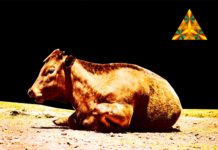The Mekong River, a trans-boundary river teeming with curious wildlife, was recently the site of the world’s newest species discoveries. Among the 139 new species was what researchers described as a “soul-sucking wasp” — a creature that paralyzes its prey before eating them alive. According to the World Wide Fund for Nature (WWF), the newly found species are already under major threat of extinction.
A closer look at the “dementor” wasp
Discovered in Greater Mekong — registered by the Critical Ecosystem Partnership Fund as one of the five most threatened natural habitats in the world — the wasp preys most often on cockroaches, by injecting venom into the roaches’ abdomen that transforms them into a zombie-like state. Poisoned, the cockroach has no control over its mobility, and would be dragged by the wasp to its safe place.
Other new species of the Mekong Delta
A total of 90 plants, 23 reptiles, 16 amphibians, nine fish and one mammal species were discovered in the Delta region in the past year (which crosses the borders of Cambodia, Laos, Myanmar, Thailand and Vietnam). The ampulex dementor wasp is only one of a large score of newly identified animal species. Other newly discovered species include a long-fanged pipistrelle bat (whose teeth may have evolved to prey on bigger insects). There was a color-changing frog, a bent-toed gecko (which has become the 10,000th reptile species to be documented by biologists), and the world’s recorded second-longest insect. The Phryganistria heusii yentuensis measures 54 centimeters, and appears to be so drastically different from other insects of its kind, that it may represent a whole new species.
The race for new species conservation
Just last year, three new species were catalogued as some of the biggest insect specimens the world has ever seen. There are certainly more new species (including many more stick insects, whose recent discovery numbers have risen to more than 150 species) to be discovered. The struggle, however, is accomplishing this feat — according to WWF, many, if not most, of these species are under constant and increasing threat. There needs to an ensured protection from poachers in addition to steady conservation of natural habitats and free-flowing rivers.

















